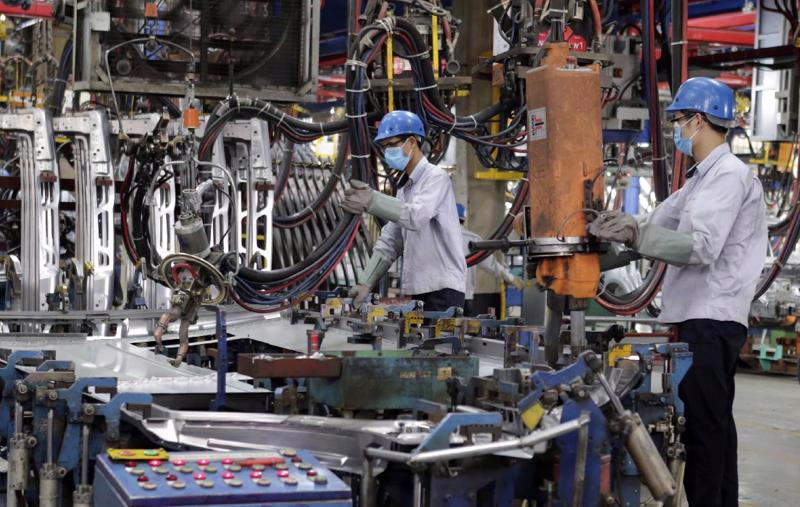Vietnam’s Manufacturing Purchasing Managers’ Index (PMI) remained below the 50.0 no-change mark in April, falling to 46.7 from 47.7 in March, according to the S&P global report released on May 4.
The index signaled a fifth deterioration in business conditions in the past six months, with the latest decline the sharpest in the year-to-date.
The April data signaled a further decline in Vietnam’s manufacturing sector as demand remained subdued. Both output and new orders fell for the second month running, with firms scaling back employment and purchasing activity accordingly. Meanwhile, cost pressures continued to ease, providing firms with the opportunity to lower their own selling prices in order to try to stimulate demand.
Manufacturing production decreased for the second month running and at a solid pace as companies reported that securing new orders had been challenging during the month amid demand weakness. The solid reduction was faster than that seen in March.
The difficulties securing new orders were shown by further reductions in both total new business and new export orders at the start of the second quarter. The rate of contraction in total new orders quickened from the previous survey period, while new export business fell at a softer pace.
Declines in new orders meant that firms were able to further deplete backlogs of work, which decreased for the fourth consecutive month. Stocks of finished goods, meanwhile, increased to the greatest extent in two years.
Manufacturers continued to lower their staffing levels, both through the non-replacement of leavers and job cuts in response to lower workloads. Moreover, the rate of contraction was the sharpest for a year and a half.
Firms also scaled back their input purchases in April; the second month in succession this has been the case. A decline in demand for inputs helped lead to a fourth successive shortening of average lead times. Some firms also reported that improved transportation conditions had helped improve vendor performance.
With input buying lower, a fourth consecutive decline in stocks of purchases was recorded. That said, positive expectations for the future encouraged some firms to add to inventories, meaning that overall the rate of depletion was only marginal.
Positive sentiment was reflective of hopes that the current demand weakness would prove temporary, with a recovery taking place over the course of the coming year. That said, optimism was the lowest in the year-to-date.
The rate of input cost inflation slowed for the second consecutive month in April, easing to a slight pace that was the weakest in the current 35-month sequence of inflation amid some reports of lower raw material prices. Where input costs did increase, firms generally linked this to rises in prices linked to fuel and oil. A reduction in cost pressures and a subdued demand environment combined to result in a reduction in output prices, thereby ending a three-month sequence of inflation. Charges were lowered across the consumer, intermediate and investment goods sectors.
“Vietnam’s manufacturing sector appears to be going through a soft-patch at present, with firms finding securing new business challenging,” said Mr. Andrew Harker, Economics Director at S&P Global Market Intelligence. “Companies are still optimistic that output will rise over the coming year, although sentiment has faded as new orders have dropped off in recent months.”
“Manufacturers have started lowering their prices to try and stimulate demand, with reduced cost pressures providing some room for maneuver. In fact, input prices increased at the softest pace in almost three years.”









 Google translate
Google translate